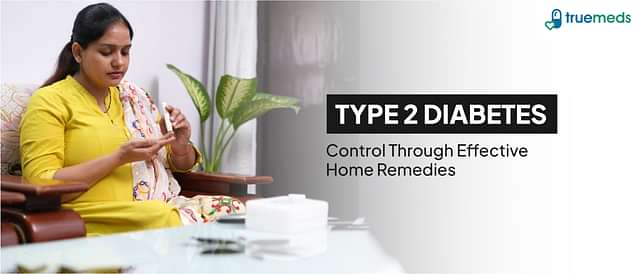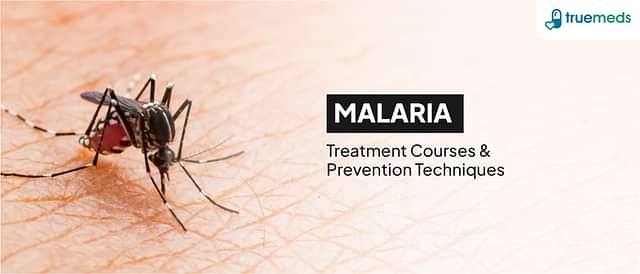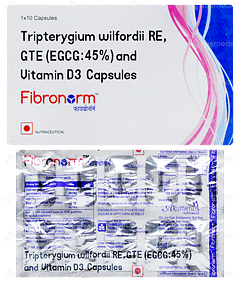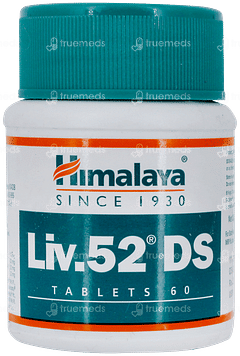Blood Cancer
Blood cancer is a type of cancer that affects the blood cells and bone marrow, which are vital for carrying oxygen, fighting infections, and controlling bleeding. There are several types of blood cancer, including leukaemia, lymphoma, myeloma, myelodysplastic syndromes (MDS), and myeloproliferative neoplasms (MPN), each with distinct characteristics and treatments. The stages of blood cancer range from acute (fast-growing) to chronic (slower-growing) and are crucial for determining an appropriate treatment plan. Treatment options vary depending on the type and severity of the blood cancer, and may include stem cell transplantation, chemotherapy, radiation therapy, immunotherapy, and targeted therapies.
Last updated on : 13 Dec, 2024
Read time : 15 mins
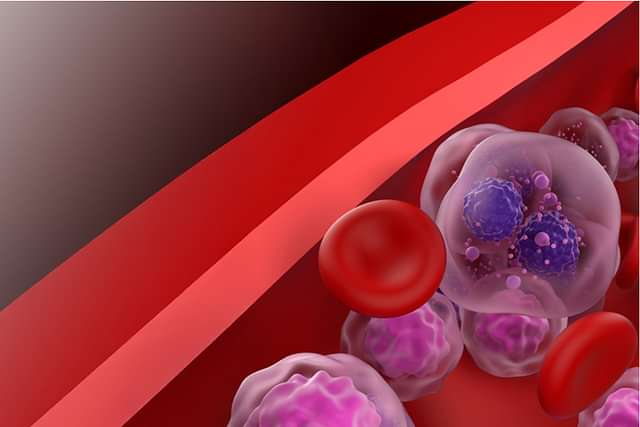
Overview of Disease
Blood cancer, also known as haematologic cancer, is a term used to describe a group of cancers that affect the blood, bone marrow, and lymphatic system. These cancers occur when abnormal blood cells grow out of control, disrupting the normal functioning of healthy blood cells, which play crucial roles in fighting infections and producing new blood cells. Understanding the basics of blood cancer is essential for early detection, proper diagnosis, and effective treatment.
What is Blood Cancer?
Blood cancer is a broad term that encompasses several types of cancer affecting the blood, bone marrow, and lymphatic system. In a healthy individual, the bone marrow produces stem cells that mature into red blood cells, white blood cells, and platelets. These cells play crucial roles in maintaining overall health, such as carrying oxygen to tissues, fighting infections, and preventing excessive bleeding. In blood cancer, the normal production and function of these cells are disrupted, leading to the accumulation of abnormal, immature blood cells.
Key Factors about Blood Cancer
| Category | Details |
| Also Referred as | Leukaemia, Lymphoma, Multiple Myeloma, Myelodysplasia |
| Commonly Occurs In | Adults, Children |
| Affected Organ | Bone Marrow, Lymphatic System |
| Type | Acute, Chronic, Hodgkin, Non-Hodgkin |
| Common Signs | Fatigue, Weight Loss, Night Sweats, Bruising, Bleeding, Frequent Infections, Swollen Lymph Nodes, Fever, Anaemia, Bone Pain, Weakness |
| Consulting Specialist | Haematologist, Oncologist |
| Treatement Procedures | Chemotherapy, Targeted Therapy, Stem Cell Transplant, Radiation Therapy |
| Managed By | Acute Myeloid Leukaemia (azacitidine, cytarabine), Acute Lymphoblastic Leukaemia (nelarabine, dexamethasone), Chronic Lymphocytic Leukaemia (fludarabine, chlorambucil), Multiple Myeloma (bortezomib, lenalidomide) |
| Mimiciking Condition | Aplastic Anaemia, Myeloproliferative Neoplasms, Myelofibrosis |
Types of Blood Cancer
There are several types of blood cancer, each affecting different types of blood cells. These include:
1. Leukaemia
Leukaemia is a type of blood cancer that affects the white blood cells or the cells that develop into white blood cells. Some common types of leukaemia include:
Chronic lymphocytic leukaemia (CLL): A slow-growing cancer affecting the lymphocytes, a type of white blood cell.
Acute myeloid leukaemia (AML): A fast-growing cancer that affects the myeloid cells, which give rise to red blood cells, platelets, and certain types of white blood cells.
2. Lymphoma
Lymphoma is a blood cancer that develops in the lymphatic system, which is part of the body's immune system. The two main types of lymphoma are:
Hodgkin lymphoma: A type of lymphoma characterised by the presence of Reed-Sternberg cells, which are large, abnormal lymphocytes.
Non-Hodgkin lymphoma: A group of lymphomas that do not involve Reed-Sternberg cells and can be further classified based on the type of lymphocyte affected (B-cell or T-cell).
3. Myeloma
Myeloma, also known as multiple myeloma, is a blood cancer that begins in the plasma cells, a type of white blood cell that produces antibodies. In myeloma, abnormal plasma cells accumulate in the bone marrow, interfering with the production of normal blood cells and potentially causing damage to the bones.
4. Myelodysplastic Syndromes (MDS)
Myelodysplastic syndromes (MDS) are a group of disorders characterised by the ineffective production of blood cells in the bone marrow. In MDS, the bone marrow fails to produce enough healthy blood cells, leading to low blood cell counts (cytopenias). MDS can progress to acute myeloid leukaemia (AML) in some cases.
5. Myeloproliferative Neoplasms (MPN)
Myeloproliferative neoplasms (MPN) are a group of rare blood cancers in which the bone marrow produces too many of one or more types of blood cells. The three main types of MPN are:
Essential thrombocythemia (ET): Characterised by an overproduction of platelets.
Myelofibrosis (MF): Characterised by the buildup of scar tissue in the bone marrow, leading to an underproduction of blood cells.
Polycythaemia vera (PV): Characterised by an overproduction of red blood cells.
Recognising the various types of blood cancer is essential for accurate diagnosis and targeted treatment.
Early Signs of Blood Cancer
The early signs of blood cancer may include:
Unexplained weight loss
Bruising or bleeding that is unexplained
Lumps or swellings
Shortness of breath
Drenching night sweats
Infections that are persistent, recurrent, or severe
Fever that is unexplained
Rash or itchy skin that is unexplained
Pain in bones, joints, or abdomen
Tiredness that doesn't improve with rest or sleep
Paleness (pallor)
While these early signs may indicate blood cancer, they can also be associated with other health conditions. If you experience any of these symptoms persistently, it is essential to consult your doctor for a proper diagnosis.
Symptoms of Blood Cancer
Blood cancer encompasses various types, each presenting with its own set of symptoms. However, there are some common signs and symptoms associated with these cancers, including:
General symptoms: Patients often experience persistent fatigue, unexplained weight loss, and recurrent infections. These general symptoms arise due to the body's compromised ability to produce healthy blood cells.
Lymphoma symptoms: Lymphoma, a cancer of the lymphatic system, may present with swollen lymph nodes, which can be painless. Patients might also experience night sweats, fevers, and itching.
Leukaemia symptoms: Leukaemia, a cancer affecting blood and bone marrow, causes symptoms such as easy bruising or bleeding, frequent infections, and bone pain. Anaemia related to leukaemia can result in pallor and shortness of breath.
Myeloma symptoms: Myeloma affects the plasma cells in the bone marrow and can lead to symptoms such as back pain, frequent bone fractures, kidney problems, and high calcium levels in the blood, which can cause excessive thirst and frequent urination.
Stages of Blood Cancer
The staging of blood cancer depends on the specific type of cancer. The Rai staging system is used to classify chronic leukaemia into different stages:
Stage 0: The patient has elevated white blood cell counts but no other symptoms.
Stage 1: The patient has elevated white blood cell counts along with enlarged lymph nodes.
Stage 2: The patient has elevated white blood cell counts and anaemia, and may also have enlarged lymph nodes.
Stage 3: The patient has elevated white blood cell counts and anaemia, and may also have enlarged lymph nodes and/or an enlarged liver or spleen.
Stage 4: The patient has elevated white blood cell counts, anaemia, and low platelet counts and may also have enlarged lymph nodes and/or an enlarged liver or spleen.
Different types of blood cancers, such as lymphoma and myeloma, use their own specific staging systems.
Causes of Blood Cancer
Blood cancers have complex causes that aren’t fully understood. However, several factors can increase the risk of developing these cancers, including:
Genetic factors: A family history of blood cancer or other cancers can increase the likelihood of developing these conditions. Certain genetic mutations and inherited syndromes, such as Down syndrome or BRCA mutations, may also elevate the risk.
Environmental factors: Exposure to certain chemicals and radiation can increase the risk of blood cancer. For example, long-term exposure to benzene, commonly found in industrial environments, and high levels of radiation from past cancer treatments are linked to a higher risk of developing these cancers.
Immune system disorders: People with immune system disorders or autoimmune diseases have a higher risk of developing blood cancers. Conditions like HIV/AIDS and other immune deficiencies increase this risk due to the weakened immune system.
Age: Blood cancers can develop at any age, but some types are more common in certain age groups. For instance, leukaemia is frequently seen in both children and older adults, while lymphoma is often diagnosed in adults.
Lifestyle factors: Smoking is a known risk factor for various cancers, including certain types of leukaemia. Diet and physical activity also play a role in overall cancer risk.
Risk Factors
Several factors can increase an individual's risk of developing blood cancer. These risk factors include:
Age (e.g., leukaemia is more common in children and older adults; lymphoma is often diagnosed in adults)
Sex
Ethnicity
Family history
Radiation or chemical exposure
Certain health conditions (e.g. HIV/AIDS) and treatments (e.g. chemotherapy or radiation)
Who's at Risk?
While anyone can develop blood cancer, some groups of people are at a higher risk:
Older adults
Men (blood cancers are more common in men)
People with a family history of blood cancer
People with certain genetic disorders
People exposed to high levels of radiation or chemicals
People with certain health conditions, such as autoimmune disorders or chronic infections
Complications
Blood cancer can lead to various complications, depending on the specific type of cancer and its progression. Some common complications include:
Tumour lysis syndrome (TLS): This occurs due to the rapid destruction of cancer cells, leading to an electrolyte imbalance and kidney dysfunction.
Disseminated intravascular coagulation (DIC): Characterised by dysfunctional blood clotting, DIC can cause both thrombosis and haemorrhage. It is often associated with acute promyelocytic leukaemia.
Infection: Blood cancer patients have an increased risk of infection due to immunosuppression from chemotherapy or the cancer itself.
Polycythaemia vera complications: This type of blood cancer can cause blood clots, an enlarged spleen, and high levels of red blood cells, leading to open sores, joint inflammation, and other blood disorders.
Leukaemia complications: Patients with leukaemia may experience recurrent infections, weight loss, fatigue, fevers, abdominal pain, and bleeding.
Lymphoma complications: Swollen lymph nodes or an enlarged liver or spleen, bone pain, and other symptoms may vary depending on the type of lymphoma.
Myeloma complications: Abnormal plasma cells in myeloma can cause bone pain and damage, kidney problems, and anaemia.
Prevention of Blood Cancer
The preventative measures for blood cancer may include:
Risk factor management: While the exact cause of blood cancer is unknown, managing risk factors such as quitting smoking, minimising radiation exposure, and avoiding harmful chemicals may reduce the likelihood of developing the disease.
Genetic screening: Genetic screening and counselling can help identify people who have a higher risk of developing blood cancer due to inherited genetic mutations. This allows for early detection and implementation of preventive measures, such as regular monitoring and lifestyle modifications.
Healthy lifestyle: Adopting a healthy lifestyle may help reduce the risk of developing blood cancer. This includes maintaining a balanced diet rich in fruits and vegetables, engaging in regular physical activity, and maintaining a healthy body weight.
Diagnosis & Tests
If blood cancer is suspected based on signs and symptoms, a series of tests may be performed to confirm the diagnosis. These include:
Physical examination: The diagnostic process for blood cancer typically begins with a thorough physical examination. The doctor will check for signs of anaemia, such as pale skin, and assess the size of lymph nodes, liver, and spleen, as enlargement of these organs may indicate blood cancer.
Blood tests: A complete blood count (CBC) and peripheral blood smear can reveal abnormalities in blood cell counts and appearance, suggesting blood cancer.
Bone marrow biopsy: A bone marrow biopsy involves removing a small sample of bone marrow, usually from the hip bone, for examination under a microscope. This can help identify the presence and type of blood cancer.
Imaging tests: Imaging tests like X-rays, CT scans, MRI scans, and PET scans may be used to assess the extent of the cancer and detect any complications.
Lumbar puncture: In some cases, a lumbar puncture (spinal tap) may be performed to check for cancer cells in the cerebrospinal fluid.
Genetic testing: Genetic testing can help identify specific genetic mutations associated with certain types of blood cancer, aiding in diagnosis and treatment planning.
Treatment & Management
The management of blood cancer depends on the specific type, stage, and individual patient factors. Treatment options may include:
Chemotherapy: Various chemotherapy regimens are used to kill cancer cells, based on the type and stage of blood cancer.
Targeted therapy: These medications target specific molecules involved in the development and progression of blood cancer.
Immunotherapy: This approach harnesses the patient's immune system to fight blood cancer cells.
Stem cell transplantation: In some cases, replacing the patient's bone marrow with healthy stem cells from a donor can help restore normal blood cell production.
Radiation therapy: High-energy radiation is used to kill cancer cells in specific areas of the body.
Surgery: In certain cases, surgery may be necessary to remove affected lymph nodes or other tissues.
The choice of treatment depends on various factors, including the type and stage of blood cancer, the patient's age and overall health, and the potential side effects of each treatment option.
Medication for Blood Cancer
The treatment of blood cancer involves the use of various medications, depending on the specific type of cancer. For acute myeloid leukaemia (AML), commonly used medicines include arsenic trioxide, azacitidine, cyclophosphamide, cytarabine, and daunorubicin hydrochloride. In the case of acute lymphoblastic leukaemia (ALL), medications such as nelarabine, asparaginase erwinia chrysanthemi, clofarabine, dexamethasone, doxorubicin hydrochloride, imatinib mesylate, ponatinib hydrochloride, mercaptopurine, methotrexate sodium, pemigatinib, prednisone, and rituximab are used in various combinations to target the cancerous cells effectively. The choice of medication depends on factors such as the patient's age, overall health, and the specific subtype of blood cancer. While these powerful medications are essential in the fight against blood cancer, they can also lead to various side effects that require careful management.
Side Effects of Blood Cancer Treatment
Blood cancer treatment can cause various side effects, including:
Nausea and vomiting
Fatigue and weakness
Hair loss
Increased risk of infections
Anaemia (low red blood cell count)
Thrombocytopenia (low platelet count)
Diarrhoea
Peripheral neuropathy (numbness or tingling in the hands and feet)
Kidney damage
When to See a Doctor?
If you experience persistent symptoms such as unexplained fatigue, frequent infections, easy bruising or bleeding, or unintended weight loss, it is crucial to consult your doctor. Additionally, if you notice changes in your skin, such as unusual paleness or the appearance of unexplained lumps, seeking immediate medical attention is essential. Early diagnosis and prompt treatment are vital in improving the prognosis and quality of life for people with blood cancer. By addressing concerns and symptoms early on, patients can receive the necessary care and support to manage their condition effectively.
Key Takeaways
Blood cancer is a type of cancer that affects the blood, bone marrow, or lymph nodes, and includes leukaemias, lymphomas, and multiple myeloma.
Treatment options for blood cancer include chemotherapy, targeted therapy, immunotherapy, and stem cell transplantation, with research exploring the potential of salts in enhancing the immune response against cancer cells.
Patients undergoing blood cancer treatment may experience various side effects, such as fatigue, increased risk of infections, and peripheral neuropathy, and should report any unusual symptoms to their doctor.
Early detection and consultation with a doctor are crucial for the effective treatment and management of blood cancer, with symptoms such as persistent fatigue, unexplained weight loss, and frequent infections warranting medical attention.
FAQs
How long can a blood cancer patient live?
The life expectancy for blood cancer patients varies based on the specific type of cancer. Some patients may survive for five years or more, while others have a lower survival rate.
Can blood cancer be cured?
While some types of blood cancer, such as acute promyelocytic leukaemia (APL), can be cured, others, like chronic lymphocytic leukaemia (CLL), can only be managed with treatment.
Is blood cancer painful?
Blood cancer itself does not usually cause pain directly. However, patients may feel discomfort due to related symptoms like bone damage, enlarged lymph nodes, or infections. Cancer treatments can also lead to physical discomfort.
Which blood cancer is not curable?
Chronic lymphocytic leukaemia (CLL) and chronic myeloid leukaemia (CML) can go into remission but are generally not considered curable. These cancers often relapse, requiring ongoing treatment to manage the disease.
Can you live 20 years with myeloma?
Yes, with advancements in treatment, it is possible to live 20 years or more with myeloma. Studies show significant improvements in myeloma patients' survival rates.
What are the 7 warning signs of blood cancer?
Common early signs of blood cancer include fatigue, weakness, fever, chills, shortness of breath, unexplained weight loss, abdominal or limb swelling, easy bruising, and frequent infections.
How to check blood cancer?
Blood cancer diagnosis involves a combination of blood tests, bone marrow aspiration and biopsy, imaging tests (e.g., CT or PET scans), and lymph node biopsy if needed.
What is the first stage of blood cancer?
The early stages of blood cancer may present with non-specific symptoms such as fatigue, fever, unexplained weight loss, and frequent infections. Prompt medical evaluation is crucial for early diagnosis and treatment.
References
American Society of Hematology (n.d.). Blood cancers. https://www.hematology.org/education/patients/blood-cancers
Cancer Research UK. (n.d.). Blood cancers. https://www.cancerresearchuk.org/about-cancer/blood-cancers
Blood Cancer UK. (n.d.). Blood cancer - What is it, symptoms and treatment. https://bloodcancer.org.uk/understanding-blood-cancer/
Yale Medicine. (n.d.). Blood cancers. https://www.yalemedicine.org/conditions/blood-cancers
Check Related Salts
Browse Other Conditions
Latest health articles
Top Health Essentials
Disclaimer
Top-Selling Medicines:
...View more
Top-OTC medicines:
...View more
Subscribe
Registered Office Address
Grievance Officer
Download Truemeds

Contact Us
Our customer representative team is available 7 days a week from 9 am - 9 pm.
v3.7.5
Our Payment Partners


















